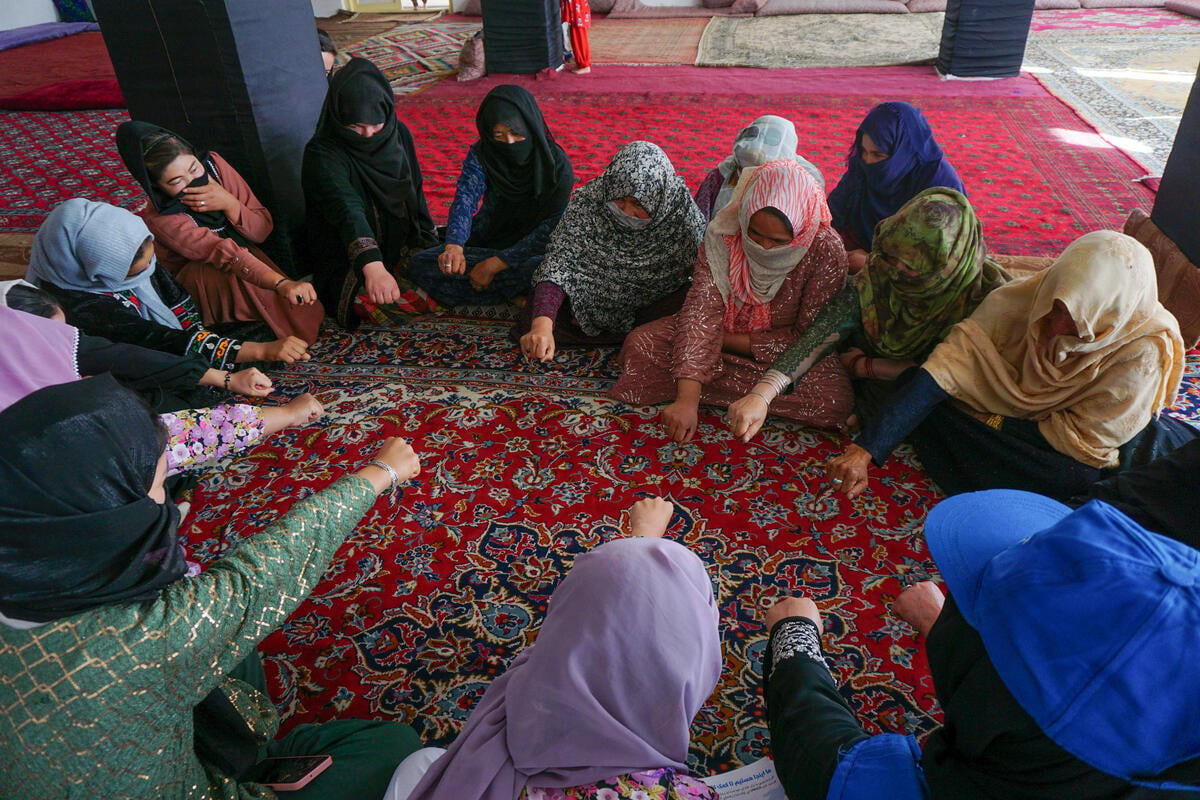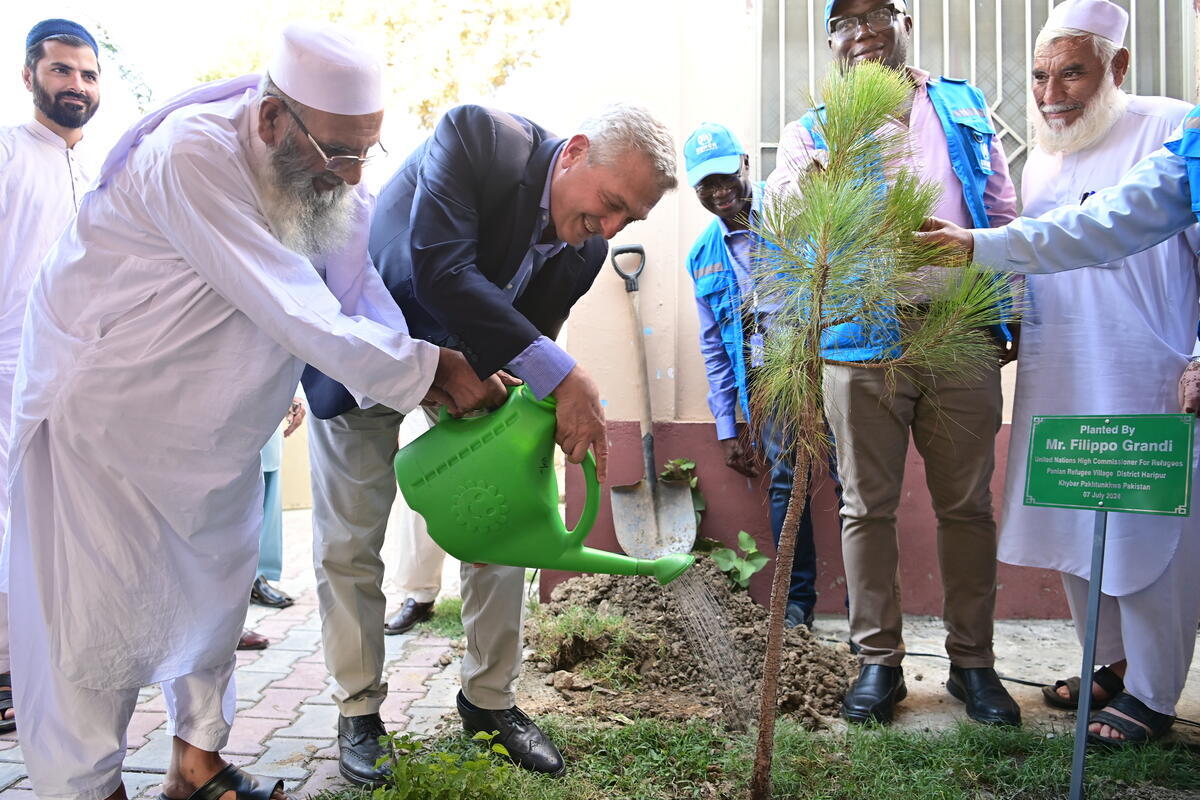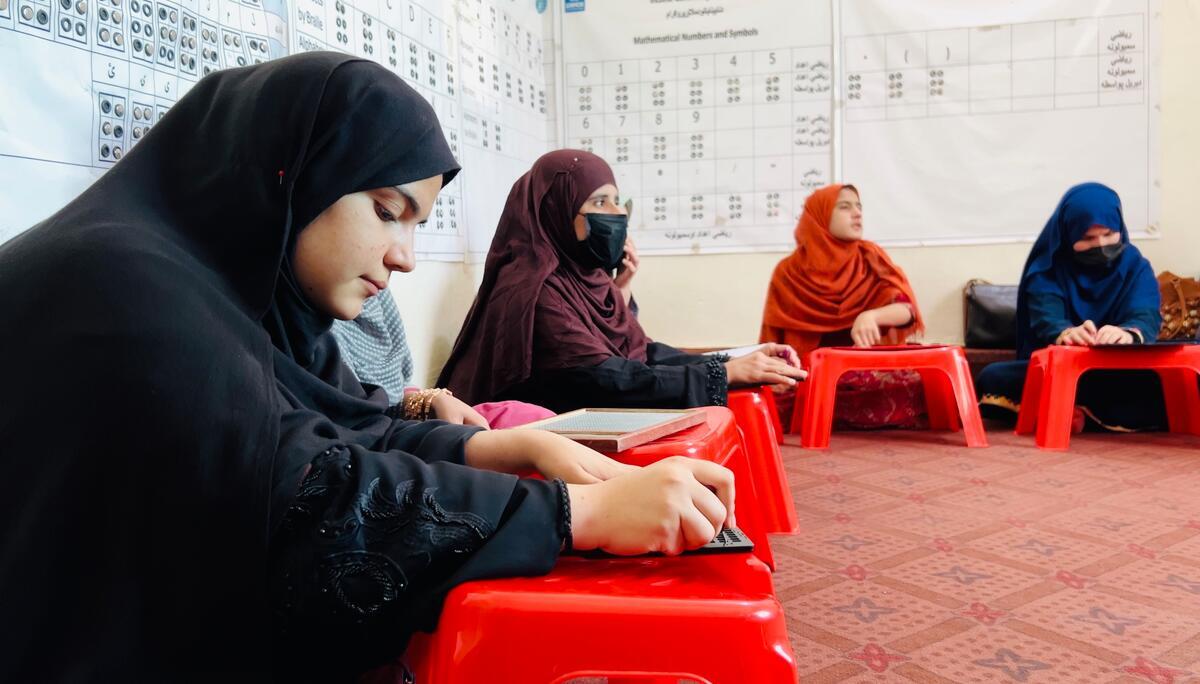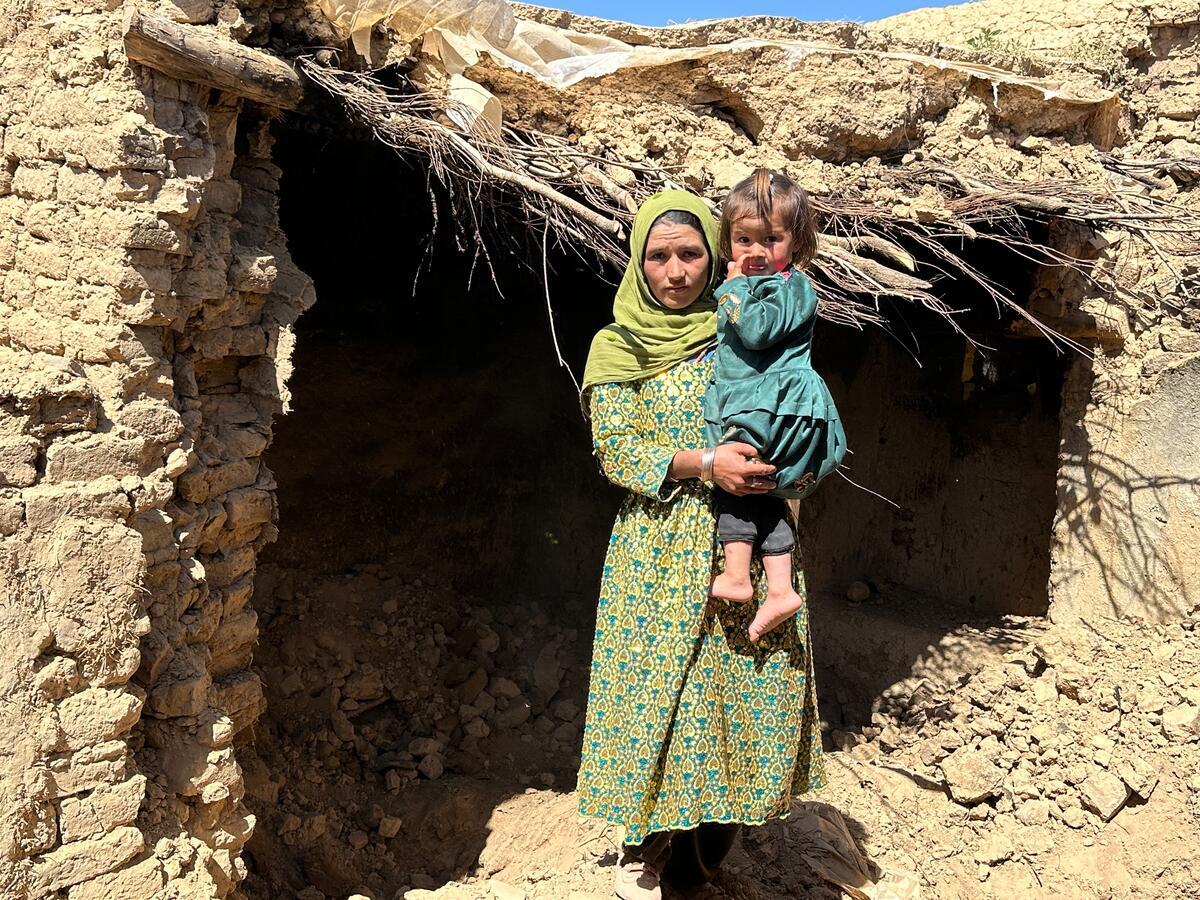Stranded Afghans start moving as total returns to Afghanistan cross 1.5 million
Stranded Afghans start moving as total returns to Afghanistan cross 1.5 million

KABUL, August 15 (UNHCR) - The UN refugee agency today started moving Afghans stranded at the Pakistan border to an interim haven in southern Afghanistan. This comes as returns to Afghanistan crossed 1.5 million, almost double the 800,000 refugees UNHCR had initially planned to assist home this year.
On Thursday, 466 Afghans who had volunteered to leave a desolate, windswept encampment at Chaman, on Pakistan's frontier with southern Afghanistan, boarded 20 UNHCR-hired trucks and were relocated to a recently-prepared site at Zhare Dasht, 30 km west of Kandahar.
The Zhare Dasht camp was established by the UN refugee agency with the help of the Afghan authorities as an interim solution for the tens of thousands of displaced people stranded in squalid sites around the Pakistan border.
"This is a temporary solution to get these people through winter with better assistance," said UNHCR spokeswoman Maki Shinohara at a Thursday press briefing in Kabul. "We hope to continue with regular movements to Zhare Dasht, and at the same time continue to assist families who wish to go home."
There are more than 25,000 Afghans camped at Chaman's so-called "waiting area" site and at least 30,000 internally displaced persons (IDPs) in four primitive camps located around Spin Boldak, just across the border in Afghanistan.
Khan Zada, the UNHCR field officer at Chaman, said others stranded at the waterless "waiting area" camp showed strong interest in the move. Although most have not decided whether to join the relocation, 250 families have already asked to go to Zhare Dasht. The next group is expected to leave for the new site in the next week.
Zhare Dasht is ready to receive 30,000 people and can be expanded to accommodate 60,000. The UN refugee agency believes Zhare Dasht will serve as a temporary haven where the Afghans can receive assistance away from the precarious border camps until the time comes when they can return to their home areas.
The Afghans who went to Zhare Dasht on Thursday were from the northern provinces of Faryab and Jozjan, and the southern province of Helmand.
The Afghans at Chaman have been stranded at the arid site since February, when the Pakistan government closed its borders to Afghans fleeing the effects of drought and ethnic persecution in the north.
Spin Boldak's displaced persons live in similarly desolate camps lacking proper sanitary facilities, shelter, food aid and other assistance. Most of the Afghans arrived there in late 2001, fleeing lawlessness as the Taliban regime collapsed and seeking aid then being distributed by various Islamic relief agencies.
Tension and occasional security problems have hampered the work of UNHCR and other relief agencies operating in the dusty border zone around the Afghan/Pakistan border. Several relief agencies have left Spin Boldak in recent months, which has further worsened conditions in the sprawling IDP camps.
The voluntary relocation to Zhare Dhast was requested by the governments of both Pakistan and Afghanistan. Those who opt to relocate will receive food assistance and health care. They will live in tents while they build their own homes on 500-square-metre plots located around already drilled wells. The new site also includes space for a community services centre where mosques, schools and markets can be built.
So far, more than 1.5 million Afghans have already gone back since the start of assisted repatriation by the Afghan government and UNHCR in March. Of these, over 1.3 million have come from Pakistan, more than 136,000 from Iran and nearly 10,000 from central Asian states. More than 200,000 internally displaced Afghans have also returned home with assistance from the refugee agency and its partners.
UNHCR and the Afghan authorities initially thought that only some 800,000 people might repatriate from Pakistan and Iran this year, while another 400,000 displaced persons would be helped home. The agency's goal for refugee returns was surpassed less than four months after the assisted return operation began in March.
In all, UNHCR plans to help 2 million Afghan refugees and internally displaced persons return home this year. To review the progress of the return programme, shelter projects and other initiatives, agency chief Ruud Lubbers will travel to Afghanistan from August 24-28, when he is scheduled to meet government officials and visit the Kandahar area.








